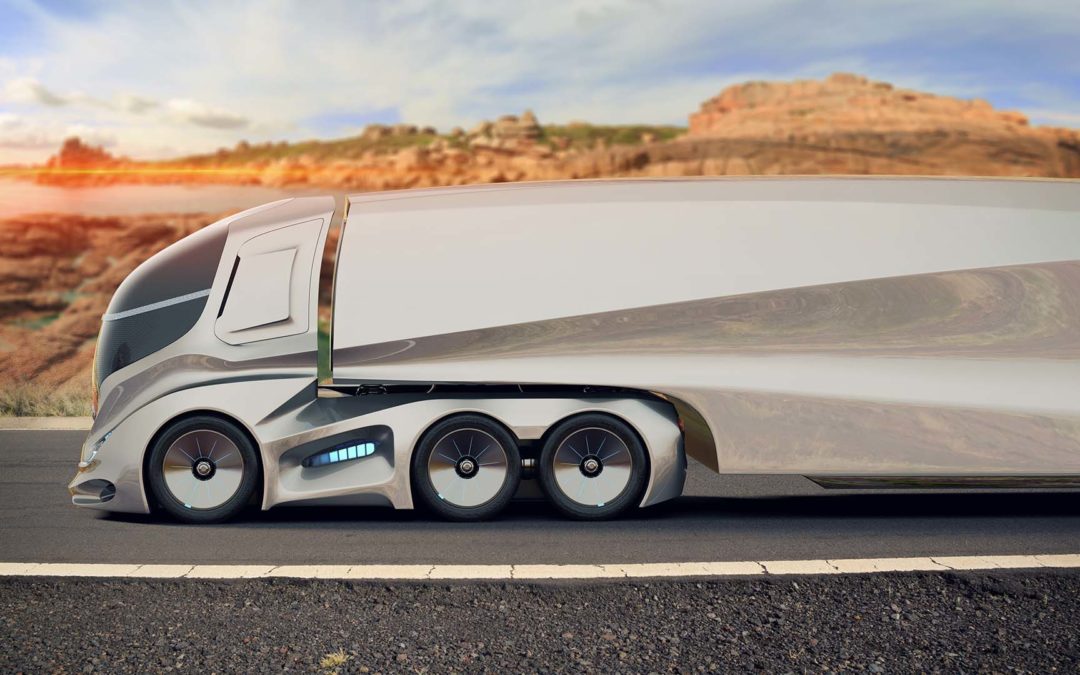The picture of the autonomous truck has been coming into focus as vehicle manufacturers work together with software developers to bring the idea to fruition.
Between the persistent driver shortage, an uptick in ecommerce orders and the need to reduce “empty” miles and other transportation challenges, the time when trucks can drive on their own—at least in theory—can’t really come soon enough.
But much like the passenger car, the majority of which still requires a human in order to move, the autonomous tractor-trailer may still be some time off. In March, a self-driving 18-wheeler spent more than five straight days hauling goods between Dallas and Atlanta. According to the New York Times, the truck ran around the clock, traveled more than 6,300 miles, made four round trips and delivered eight loads of freight.
The 5-day drive demonstrated the potential of autonomous trucks, the publication states. “A traditional truck, whose lone driver must stop and rest each day, would need more than 10 days to deliver the same freight.”The 6,300-mile drive also showed that the technology is not quite ready for prime time.
“Each day, Kodiak (a self-driving startup) rotated a new team of specialists into the cab of its truck, so that someone could take control of the vehicle if anything went wrong,” NYT reports. “These ‘safety drivers’ grabbed the wheel multiple times.”
It’s Not an Overnight Fix
Companies like Kodiak have spent years building and testing self-driving trucks—and companies across the trucking industry are eager to begin reaping the benefits—but the most difficult stretch in this quest to automate freight delivery remains: getting these trucks on the road without anyone behind the wheel.
Deploying these trucks also presents logistical challenges that NYT says will require “significant changes” across the trucking industry.
“There are so many issues that in reality are far more complex than they might seem on paper,” trucking expert Steve Viscelli told NYT. “Though the developers and their partners are putting a lot of effort into thinking this through, many of the questions about what needs to change cannot yet be answered. We are going to have to see what reality looks like.”
The Goalposts Keep Moving
Over the last 10 years, a substantial amount of investment has gone into the research and development of self-driving vehicles. “Despite the repeated promise that the day these vehicles take over our roads is just around the corner,” Smart Warehousing’s Carl Wasinger writes in The Fast Mode, “the goalpost seems to keep moving.”
What Wasinger means is that even with billions of dollars being poured into the development of autonomous vehicles, building them is a lot harder, slower, and costlier than anyone previously thought. “But while self-driving cars might still be some years away,” he writes, “there are a lot of hopeful signs that autonomous trucks are a lot closer to becoming a reality.”
For starters, trucks spend a lot of their time on relatively straight and predictable highways that are easier to model for artificial intelligence (AI) programs (compared to busy city streets). And while autonomous cars may be cost-prohibitive for the average driver, the economics of scale that happen when the technology is applied in trucking actually may make it a worthwhile expense for fleet managers.
“Unsurprisingly, this has made autonomous trucking very attractive for shipping and logistics managers, especially as they grapple with a rising driver shortage and increasing shipping costs,” Wasinger writes. “But how soon will it be before we see big 18-wheelers careening down the turnpike with no human driver in sight? And will the efficiency gains from these vehicles truly make them a worthwhile expense?”
When Will it Happen?
Citing the McKinsey Center for Future Mobility, Wasinger expects autonomous trucks to become available in four separate phases. The first two involve platooning (in which a fleet of trucks will follow a lead truck on the highway) and having a human driver only in the lead truck (with a convoy of autonomous trucks following closely behind). The latter is expected to become a reality by 2025.
The third phase will happen when even the lead trucks are completely autonomous on the highway (by 2030) and the fourth when completely driverless autonomous trucks are on the roads at scale (some say this may happen in the early-2030s).
“Predictions are an inexact science, so it’s hard to say when exactly we will see autonomous trucking become the norm,” Wasinger writes. “But what’s undeniable is that the technology is advancing rapidly and, as autonomous trucking becomes more cost-efficient, we will see more shipping companies embrace [it].”
.jpg)
IntelliTrans’ Global Control Tower provides high levels of supply chain transparency; aggregates, completes, and enhances data from a variety of sources; offers visibility into and execution of different aspects of the supply chain; and generates data-driven alerts and analytics that ask deeper questions and deliver meaningful insights.
By leveraging tracking information, the Global Control Tower provides analytics that measures key performance indicators (KPIs) like fleet cycle time, origin/destination dwell time, lane and hauler performance, back orders, freight spend, load optimization, and more. With their rate, equipment, lease, tracking, and invoice data in a central repository that’s accessible 24/7, companies can position themselves for success in any market conditions.

